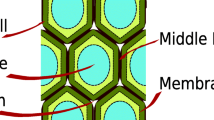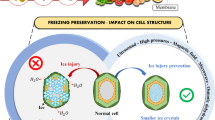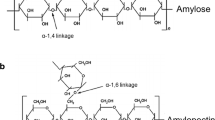Abstract
In this study, suitability of eight drying models available in literature on defining drying characteristics of areca inflorescence has been examined by non-linear regression analysis using the Statistic Computer Program. The coefficient of determination (R 2) and the reduced chi-square (χ2) are used as indicators to evaluate the best suitable model. According to the results, the Verma et al. model gave the best results for explaining the drying characteristics of areca inflorescence. The drying process could be divided into three periods: rising rate, constant rate and the falling rate period. Fick’s second law can describe the moisture transport during the food drying process that takes place in the falling rate period. The values of effective diffusivity during the drying of areca inflorescence ranged from 2.756 × 10−7 to 6.257 × 10−7 m2/s and the activation energy was tested for 35.535 kJ/mol. The heat requirement of areca inflorescence at 40–60 °C was calculated from 50.57 to 60.50 kJ/kg during the drying process.





Similar content being viewed by others
Abbreviations
- a, b, k, n :
-
Drying parameters
- D eff :
-
Effective moisture diffusivity (m2/s)
- D 0 :
-
Pre-exponential factor (m2/s)
- DR:
-
Drying rate (g water/g wet materials)
- Ea:
-
Activation energy (kJ/mol)
- L 0 :
-
Thickness of the slab (m)
- m 0 :
-
Initial mass of wet material (g)
- m t :
-
Mass of material at any time (g)
- M 0 :
-
Initial moisture content (g water/g wet materials)
- M e :
-
Equilibrium moisture content (g water/g wet materials)
- M t :
-
Moisture content at any time (g water/g wet materials)
- MR :
-
Moisture ratio
- MR exp :
-
Experimental moisture ratio
- MR pre :
-
Predicted moisture ratio
- N :
-
Number of observations
- R :
-
Universal gas constant (J/mol K)
- R 2 :
-
Determination of coefficient
- t :
-
Drying time (min)
- T :
-
Temperature (K)
- χ 2 :
-
Reduced Chi-square
References
Cheng FF, Chen WJ, Huang YL, Zhang CM, Shen Y, Hai H, Zheng YJ, Tang MM, Zhao SL, Liu JK (2011) Protective effect of areca inflorescence extract on hydrogen peroxide-induced oxidative damage to human serum albumin. Food Res Int 44(1):98–102
Menges HO, Ertekin C (2006) Thin layer drying model for treated and untreated Stanley plums. Energ Convers Manag 47(15–16):2337–2348
Akpinar EK (2006) Determination of suitable thin layer drying curve model for some vegetables and fruits. J Food Eng 73(1):75–84
Celma AR, Rojas S, Lopez-Rodriguez F (2008) Mathematical modelling of thin-layer infrared drying of wet oilve husk. Chem Eng Process 47(9–10):1810–1818
Oktay H, Cihan A, Kahveci K (2008) Mathematical modelling of drying of thin layer rough rice. Food Bioprod Process 86(4):268–275
Chen D, Zheng Y, Zhu X (2012) Determination of effective moisture diffusivity and drying kinetics for poplar sawdust by thermogravimetric analysis under isothermal condition. Bioresour Technol 107:451–455
Chen D, Li M, Zhu X (2012) TG-DSC method applied to drying characteristics and heat requirement of cotton stalk during drying. Heat Mass Transf 48(12):2087–2094
AOAC (1990) Official method of Análisis, Association of Official analytical chemists no. 934.06, 15th edn. AOAC, Arlington
Celma AR, Rojas S, López F, Montero I, Miranda T (2007) Thin-layer drying behaviour of sludge of olive oil extraction. J Food Eng 80(4):1261–1271
Koua KB, Fassinou WF, Gbaha P, Toure S (2009) Mathematical modelling of the thin layer solar drying of banana, mango and cassava. Energy 34(10):1594–1602
López R, de Ita A, Vaca M (2009) Drying of prickly pear cactus cladodes (Opuntia Ficus Indica) in a forced convection tunnel. Energ Convers Manag 50(9):2119–2126
Doymaz İ (2007) Influence of pretreatment solution on the drying of sour cherry. J Food Eng 78(2):591–596
Doymaz İ (2005) Drying behaviour of green beans. J Food Eng 69(2):161–165
El-Beltagy A, Gamea GR, Essa AHA (2007) Solar drying characteristics of strawberry. J Food Eng 78(2):456–464
Darvishi H, Asl AR, Asghari A, Azadbakht M, Najafi G, Khodaei J (2013) Study of the drying kinetics of pepper. J Saudi Soc Agric Sci. doi:10.1016/j.jssas.2013.03.002
Evin D (2012) Thin layer drying kinetics of Gundelia tournefortii L. Food Bioprod Process 90(2):323–332
Jin Park K, Vohnikova Z, Pedro Reis Brod F (2002) Evaluation of drying parameters and desorption isotherms of garden mint leaves (Mentha crispa L.) J Food Eng 51(3):193–199
Panchariya PC, Popovic D, Sharma AL (2002) Thin-layer modelling of black tea drying process. J Food Eng 52(4):349–357
Doymaz İ (2006) Thin-layer drying behaviour of mint leaves. J Food Eng 74(3):370–375
Author information
Authors and Affiliations
Corresponding author
Rights and permissions
About this article
Cite this article
Song, F., Wang, H., Huang, Y. et al. TG-DSC method applied to drying characteristics of areca inflorescence during drying. Heat Mass Transfer 53, 3181–3188 (2017). https://doi.org/10.1007/s00231-017-2063-y
Received:
Accepted:
Published:
Issue Date:
DOI: https://doi.org/10.1007/s00231-017-2063-y




